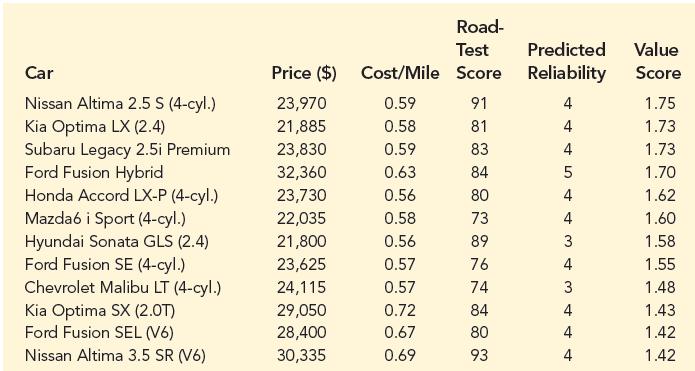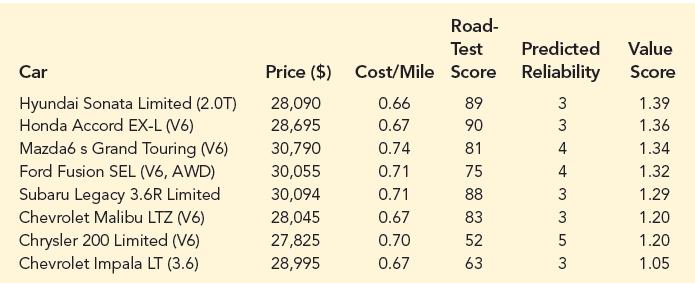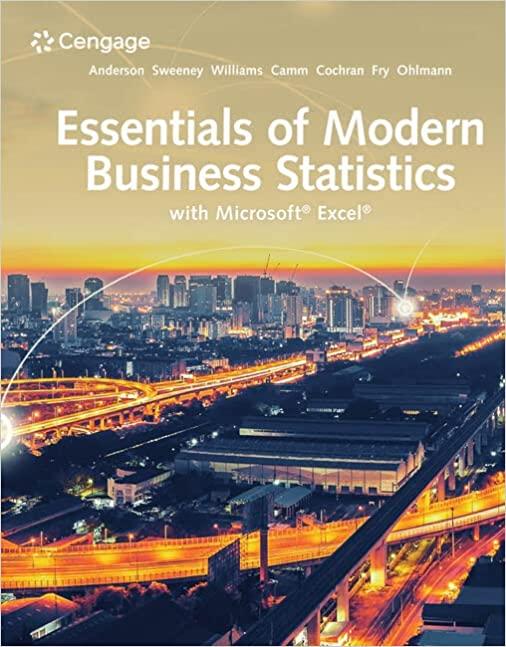When trying to decide what car to buy, real value is not necessarily determined by how much
Question:
When trying to decide what car to buy, real value is not necessarily determined by how much you spend on the initial purchase. Instead, cars that are reliable and don’t cost much to own often represent the best values. But, no matter how reliable or inexpensive a car may cost to own, it must also perform well. To measure value, Consumer Reports developed a statistic referred to as a value score. The value score is based upon five-year owner costs, overall road-test scores, and predicted reliability ratings. Five-year owner costs are based on the expenses incurred in the first five years of ownership, including depreciation, fuel, maintenance and repairs, and so on. Using a national average of 12,000 miles per year, an average cost per mile driven is used as the measure of five-year owner costs. Road-test scores are the results of more than 50 tests and evaluations and are based upon a 100-point scale, with higher scores indicating better performance, comfort, convenience, and fuel economy. The highest road-test score obtained in the tests conducted by Consumer Reports was a 99 for a Lexus LS 460L. Predicted-reliability ratings (1 = Poor, 2 = Fair, 3 = Good, 4 = Very Good, and 5 = Excellent) are based on data from Consumer Reports’ Annual Auto Survey. A car with a value score of 1.0 is considered to be “average-value.” A car with a value score of 2.0 is considered to be twice as good a value as a car with a value score of 1.0; a car with a value score of 0.5 is considered half as good as average; and so on. The data for 20 family sedans, including the price ($) of each car tested, follow.


1. Develop numerical summaries of the data.
2. Use regression analysis to develop an estimated regression equation that could be used to predict the value score given the price of the car.
3. Use regression analysis to develop an estimated regression equation that could be used to predict the value score given the five-year owner costs (cost/mile).
4. Use regression analysis to develop an estimated regression equation that could be used to predict the value score given the road-test score.
5. Use regression analysis to develop an estimated regression equation that could be used to predict the value score given the predicted-reliability.
6. What conclusions can you derive from your analysis?
Step by Step Answer:

Essentials Of Modern Business Statistics With Microsoft Excel
ISBN: 9780357131626
8th Edition
Authors: David R. Anderson, Dennis J. Sweeney, Thomas A. Williams, Jeffrey D. Camm, James J. Cochran





